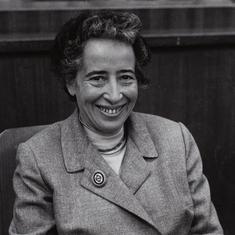The 18th century is considered as the golden age of Carnatic music. During this time lived three great composers/ musicians who were later celebrated as the musical trinity: Shyama Shastri, Tyagaraja and Muthuswami Dikshitar. Their knowledge, deep spirituality, profound musicianship, creativity and innovations make their contribution to Carnatic music invaluable.
Shyama Shastri (1762-1827), one among the musical trinity, was responsible for many great compositions. He indian classical music 38 raga harmony also composed navarathnamalika, a group of nine kritis for goddess Meenakshi of Madurai. He used different talas but was a specialist in Mishra chapu tala. His mudra (or signature word) was Shyamakrishna.
Tyagaraja (1767-1847) was a prolific composer, who composed over 24,000 compositions. They were mostly in Telugu and a few were in Sanskrit. He is credited with evolving and perfecting the kriti form. The concept of the sangati (melodic variations on a line in the composition used to beautify it) was his contribution. His pancharatna kritis form an important part of Carnatic music repertoire even today. His mudra was Tyagaraja.
Muthuswami Dikshitar (1775-1835) was a composer who sang kritis in praise of all deities. His songs are normally slow in tempo and bring out the depth and beauty of a raga. His mudra was guruguha. During this period, when the British were ruling India, many Western bands performed for the East India Company at Fort St George (Madras). This resulted in Muthuswami Dikshitar’s brother, Baluswami Dikshitar, introducing the present form of the violin (which was used by the Westerners) into Indian music. This brought in a major change, and the violin eventually became an important accompanying instrument for singers, replacing other accompanying instruments.
Moreover, Muthuswami Dikshitar, during his stay in Varanasi (with his spiritual guru Chidambaranatha Yogi), was exposed to a lot of North Indian music, including the Dhrupad style. Being a visionary with a broad mind, he was influenced by it and it reflects in his compositions which are comparatively slow paced. He also introduced some North Indian ragas into 39 South Indian music and made compositions (for example, the kriti Akhilandeshwari in Raga Dwijavanti). Dikshitar – during the early part of his life, because of the influence of his family patron, Venkatakrishna Mudaliyar, was exposed to Western music – adapted Western melodies, and created “nottuswarams” using Sanskrit text. Even though Western and North Indian influences were evident, he still retained the identity of South Indian classical music, in a way, creating even heavier South Indian classical compositions, still fusing Western and North Indian concepts together. This puts him in a special position as the first fusion artist and composer of India.
Maharaja Svati Tirunal (1813-1847), the king of Travancore, now Kerala, composed over 400 songs. He composed swarajatis, varnams, padams, javalis and musical dramas. He also composed dhrupads, khyal bandishes, tappas, thumris and bhajans in the Hindustani style. He used the mudra “Padmanabha” and its synonyms.
Maha Vaidyanatha Iyer (1844-1893) was a brilliant composer who created varnams, kritis and tillanas. His unique tillana in raga Kaanada is set to Simhanandana tala. He also composed a ragamalika on the seventy-two melakartas. He used the mudra Guhadasa in his compositions.
Patnam Subramanya Iyer (1845-1902) was a great composer and performer, who belonged to the shishya parampara of Tyagaraja. His compositions include kritis, tana varnams, pada varnams, javalis and tillanas.
Harikesanallur Mutthaiah Bhagavathar (1877-1945) was a composer who composed in Sanskrit, Telugu, Tamil and Kannada. He composed varnams, kritis, tillanas and ragamalikas, using the mudra ‘Harikesa’. He did much indian classical music 40 raga harmony to popularise Svati Tirunal’s compositions. He invented many new ragas as well.
Koteeswara Iyer (1869-1938) was one of the first composers to compose in all seventy-two melakarta ragas. He was the grandson of Kavi Kunjara Bharathi, and took the mudra Kavi Kunjara Dasan in his honour.
Veena Shivaramaiah (1886-1946) of Mysore too composed kritis in all the seventy-two melakartas as per the wishes of King Nalwadi Krishnaraja Wodeyar. Belakawadi Srinivasa Iyengar (1888–1936 ce), one of the court musicians of Mysore, composed kritis in seventytwo melakarta ragas as per the wishes of his patron Nalwadi Krishnaraja Wodeyar. He played two kritis every day on violin and showed the intricacies of the ragas to the king.
Papanasam Sivan (1890-1973) composed over 2,500 songs in many different ragas in Tamil and Sanskrit. He composed for and performed in theatrical productions, and taught at Kalakshetra. From 1935 CE onwards, he composed for and even acted in films.

Excerpted with permission from Raga Harmony: Harmonic Structures and Tonalities in Indian Classical Music, L Subramaniam, Westland.










